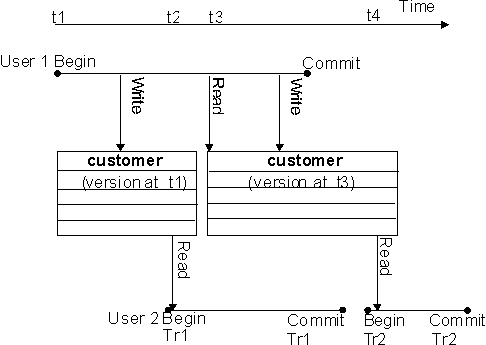While a read transaction cannot affect what an existing write transaction sees, committing a read transaction does have implications for other transactions.
If a user's read transaction commits before a concurrent write transaction does, and that user begins a new read transaction, the version remains the same.
If a read transaction commits after a concurrent write transaction does, any new transaction, whether read-only or read/write, uses a new version.
Figure 10-4 is an example of the first instance. Both of User 2's transactions use the same version as User 1's transaction began with, because that is the latest committed version of the data.
Figure 10-5 shows what happens in the second instance. This time, User 2's first read transaction (Tr1) commits after User 1's write transaction. When User 2's second transaction (Tr2) begins, it uses a new version that reflects the committed data from User 1.
Figure 10-5: Effect of read transaction committing
